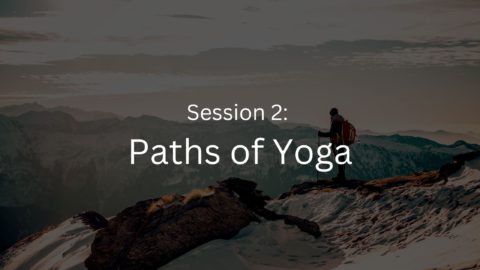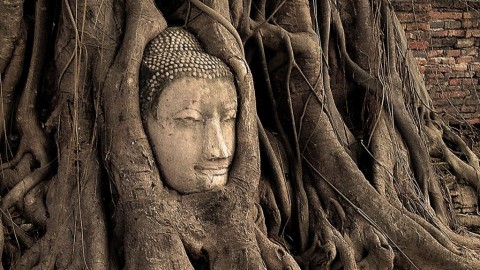If you can concentrate on one point, then the possibility of dhyan. In concentration you bring your mind to one point. In dhyan you drop that point also. Now you are totally centered, nowhere-going – because if you are going anywhere it is always going out. Even a single thought in concentration is something outside you – object exists; you are not alone, there are two. Even in concentration there are two: the object and you. After concentration the object has to be dropped.
All the temples lead you only up to concentration. They cannot lead you beyond because all the temples have an object in them: the image of God is an object to concentrate on. All the temples lead you only up to dharana, concentration.
That’s why the higher a religion goes, the temple and the image disappear. They have to disappear. The temple should be absolutely empty, so that only you are there – nobody, nobody else, no object: pure subjectivity.
Dhyan is pure subjectivity, contemplation – not contemplating “something,” because if you are contemplating something it is concentration. In English there are no better words. Concentration means something is there to concentrate upon. Dhyan is meditation: nothing is there, everything dropped, but you are in an intense state of awareness. The object has dropped, but the subject has not fallen into sleep. Deeply concentrated, without any object, centered – but still the feeling of “I” will persist. It will hover. The object has fallen, but the subject is still there. You still feel you are.
This is not ego. In Sanskrit we have two words, ahankar and asmita. Ahankar means “I am.” And asmita means ‘am.’ Just “amness” – no ego exists, just the shadow is left. You still feel, somehow, you are. It is not a thought, because if it is a thought. that “I am,” it is an ego. In meditation the ego has disappeared completely; but an amness, a shadow-like phenomenon, just a feeling, hovers around you – just a mist-like thing, that just in the morning hovers around you.
In meditation it is morning. the sun has not risen yet, it is misty: asmita, amness, is still there.
You can still fall back. A slight disturbance – somebody talking and you listen – meditation has disappeared; you have come back to concentration. If you not only listen but you have started thinking about it, even concentration has disappeared; you have come back to pratyahara. And if not only are you thinking but you have become identified with the thinking, pratyahara has disappeared; you have fallen to pranayam. And if the thought has taken so much possession of you that your breathing rhythm is lost, pranayam has disappeared: you have fallen to asan. But if the thought and the breathing are so much disturbed that the body starts shaking or becomes restless. Asan has disappeared. They are related.
One can fall from meditation. Meditation is the most dangerous point in the world, because that is the highest point from where you can fall, and you can fall badly. In India we have a word, yoga bhrashta: one who has fallen from yoga. This word is very, very strange. It appreciates and condemns together. When we say somebody is a yogi, it is a great appreciation. When we say somebody is yoga bhrashta, it is also a condemnation: fallen from the yoga. This man had attained up to meditation somewhere in his past life and then fell down. From meditation the possibility of going back to the world is still there – because of asmita, because of amness. The seed is still alive. It can sprout any moment; so the journey is not over.
When asmita also disappears, when you no longer know that you are – of course, you are but there is no reflection upon it, that “I am,” or even amness – then happens samadhi, trance, ecstasy. Samadhi is going beyond; then one never comes back. Samadhi is a point of no return. From there nobody falls. A man in samadhi is a god: we call Buddha a god, Mahavir a god. A man in samadhi is no longer of this world. He may be in this world, but he is no longer of this world.
He doesn’t belong to it. He is an outsider. He may be here, but his home is somewhere else. He may walk on this earth, but he no longer walks on the earth.
It is said about the man of SAMADHI he lives in the world but the world does not live in him.
These are the eight steps and eight limbs together. Limbs because they are so interrelated and so organically related; steps because you have to pass one by one – you cannot start from just anywhere: you have to start from yam.
Tags: Dhyan Is Meditation Going Beyond Samadhi










